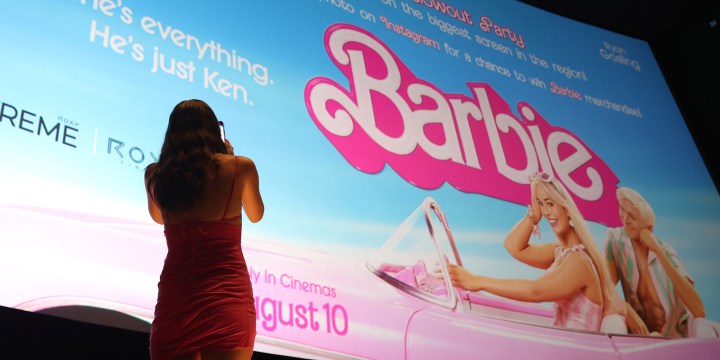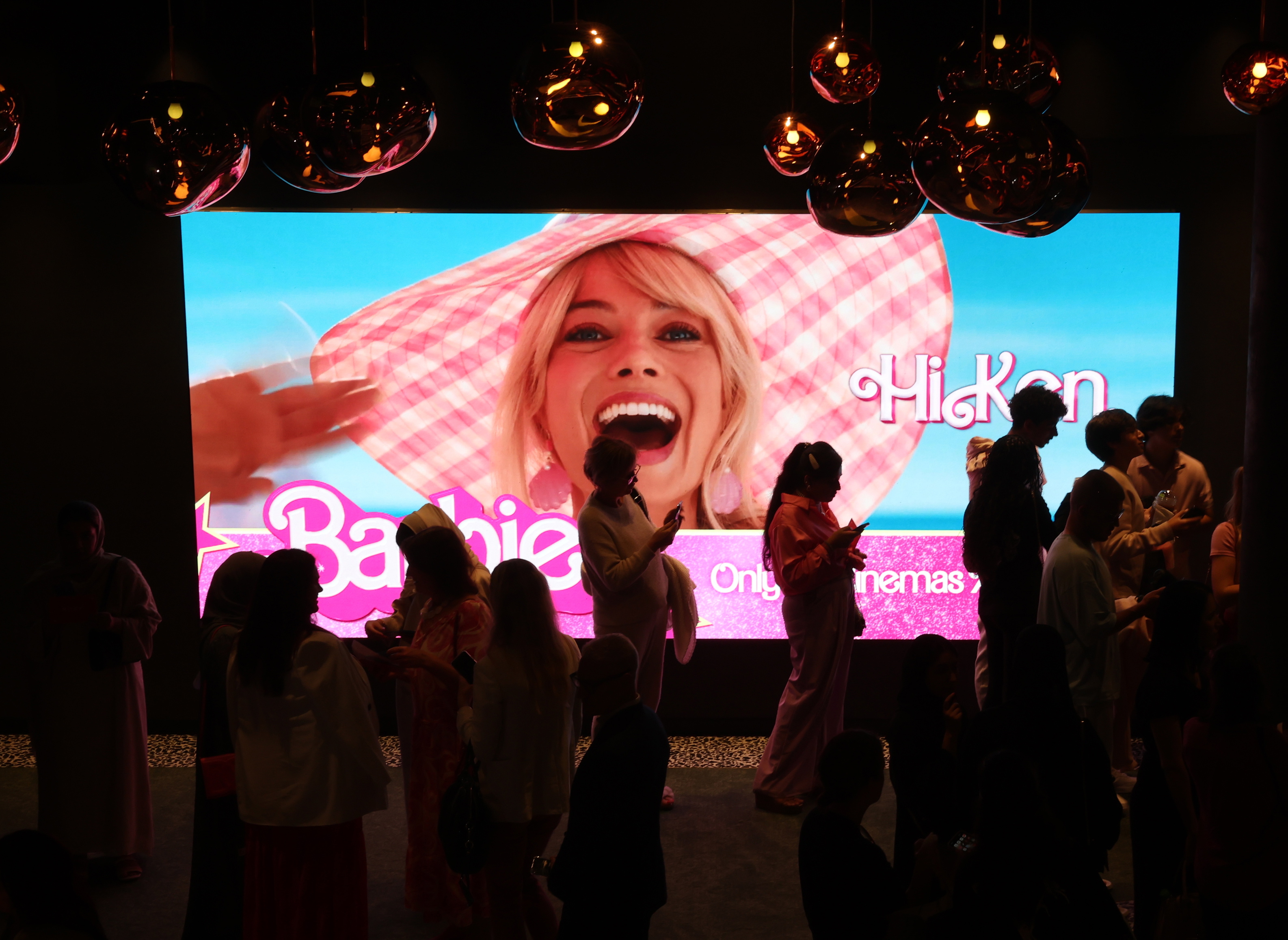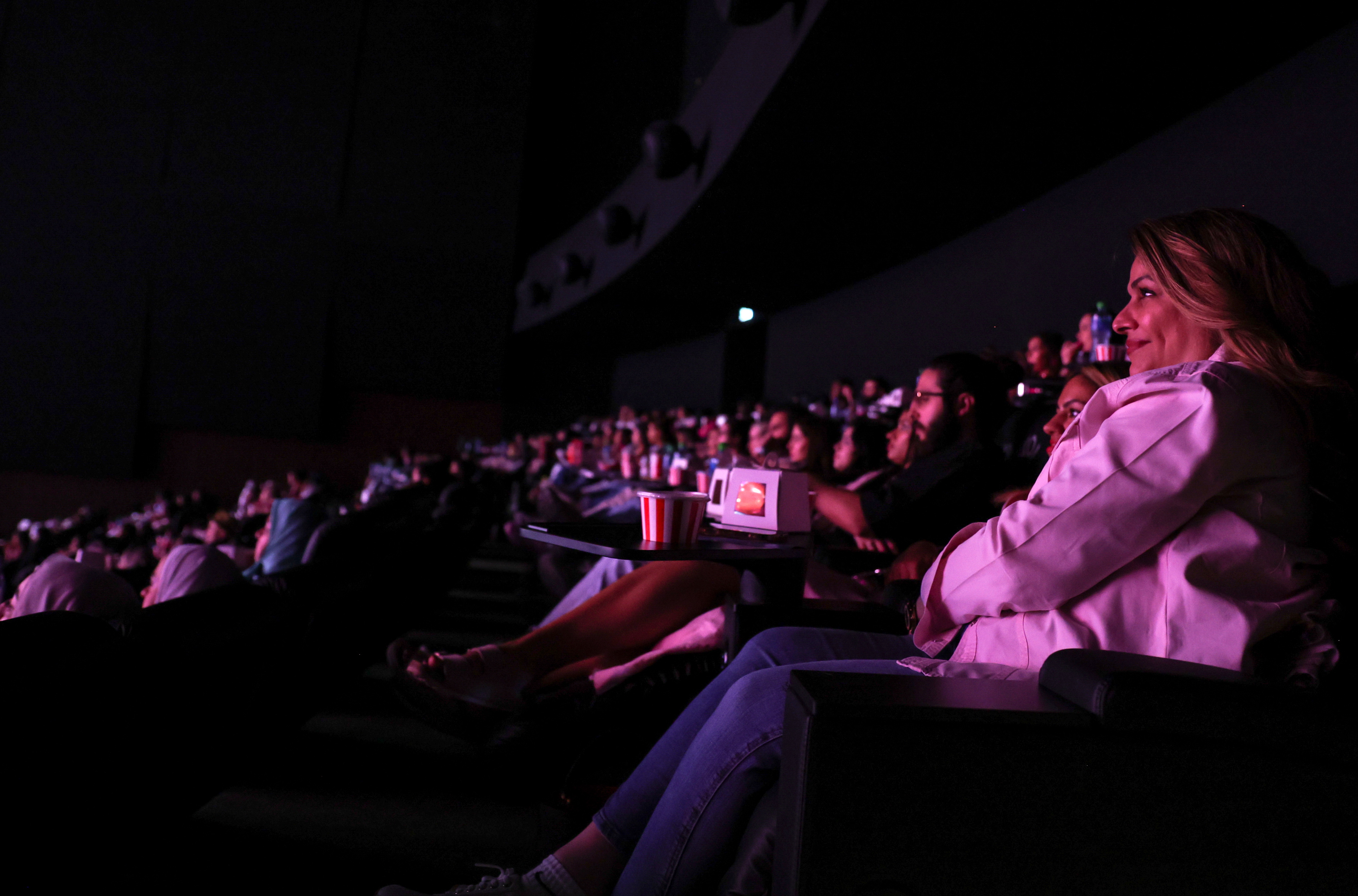BARBIELAND OP-ED
Dreaming a new day — Feminist utopias and the making of another South Africa

While watching the Barbie movie and pondering the idea of an idealised world for women, I was reminded of other visions of feminist utopias emerging a world away from the plastic glamour of Barbie dolls with their high heels and beachwear bodies.
Popular media is abuzz with the new Barbie movie. Watching it, I was pleasantly surprised by the playful and self-reflexive storyline which sees Barbie jolted from her perfect life in Barbieland by doll malfunction, which leads her on a journey to, and some misadventures in the human world.
In the process, however, she learns some hard truths about this world’s patriarchy, chauvinism, and materialistic corporate culture, as well as its perception of her as a plastic bimbo.
This is a rude awakening for Barbie, coming from a society presented in the film as a kind of feminist utopia. Barbieland is a place where women can be anything, from doctors and pilots to TV directors and even the president. Women earn their own money, control Congress — the heart of political power — and live in harmonious sisterhood. This is a place where Margot Robbie declares, while fobbing off the lovesick Ken who is hoping to get lucky, “every night is girls’ night” in the Barbie mansion.

People wait to watch the movie ‘Barbie’ on the biggest cinema screen in the Middle East at Roxy Cinemas at Dubai Hills Mall in the Gulf emirate of Dubai, United Arab Emirates on 10 August, 2023. (Photo: EPA-EFE/Ali Haider)
I’ve always been highly critical of Barbie, in line with the perception of her revealed by the first high school girls Barbie encounters in the human world who shatter Barbie’s idyllic self-perception when they tell her “You’ve been making women feel bad about themselves since you were invented.”
And yet you have to give it to the Barbies — in the history of dolls, Barbie represented a significant breakthrough. Before Barbie, the movie tells us, the only kind of dolls that existed were baby dolls which limited little girls to playing the role of mothers. The invention of Barbie in 1959 by American businesswoman and inventor Ruth Handler allowed girls to play at being beautiful, independent, and fashionable career women like Barbie herself — and in so doing created a new role model.
And yet Barbie still perpetuates the male gaze through her embodiment of physical beauty and femininity, not to mention the consumerist gaze as well. In Barbieland the Barbies might be economically and politically powerful, but they are also for the most part required to have Hollywood-perfect bodies and live in glamorous LA-inspired mansions.
In contrast to Barbie, Ken — who has never had a clear purpose or felt empowered in Barbieland — is mesmerised by the power and status men hold in the human world and decides to bring the patriarchy home ahead of Barbie’s return. When Barbie comes home, she is horrified to find that her fellow dolls have been brainwashed into relinquishing their power and status, and to fawning over and serving the Kens. Of course, Barbie and her friends then hatch a clever plan to save Barbieland for the Barbies and restore the status quo.

Visitors watch the screening of the film ‘Barbie’ at Dubai Hills Mall in the Gulf emirate of Dubai, United Arab Emirates on 10 August, 2023. (Photo: EPA-EFE/Ali Haider)
From Barbieland to Ladyland
While watching the Barbie movie and pondering the idea of an idealised world for women, I was reminded of another vision of a feminist utopia emerging a world away from the plastic glamour of Barbie dolls with their high heels and beachwear bodies…
At the turn of the 20th century in British-controlled colonial Bengal, a Muslim woman writer called Rokeya Hossain published Sultana’s Dream, an original and thought-provoking story that presented a feminist utopia where gender roles were subverted, and where, as literary scholar Mahmudal Hasan emphasises, “women ruled and enjoyed freedom in its fullest sense”.
Written in English and first published in 1905 in the Indian Ladies Magazine based out of Madras, Sultana’s Dream was one of several writings produced by Hossain who was also a pioneer social reformer and a passionate advocate for women’s education and its ability to transform gender roles.
What made it possible for the vision depicted in Sultana’s Dream to jump from imagination to the page, and consequently into the public sphere, was the emergence of a thriving print culture in the form of women’s magazines in late 19th-century Bengal, which expressed a new kind of feminist consciousness.
Nevertheless, the Sultana’s Dream is extraordinary in many respects, especially in a society where Indian cultural and gendered norms meant that many women lived in purdah (a type of seclusion where women are limited to the household largely and can only interact with males who are their kin) with little access to formal employment or education.
In Sultana’s Dream, Rokeya Hossain creates the imaginary world of Ladyland where, using wit and satire, she critiques her society and imagines an alternative. In Ladyland, gendered roles are reversed allowing women to lead full public lives, engage in politics and governance, attend university widely and learn freely, and be involved in important scientific research and the acquisition of knowledge.
It is men who are secluded and isolated in the private sphere where they must look after the household and engage in the drudgery of domestic chores.
In Ladyland, women put their knowledge and learning to good use for the benefit of society. Hossain’s story presents a science-fiction world where sophisticated technology allows women to harness the sun for energy, collect water from the atmosphere, control the weather, and even travel in flying cars. Women even help to protect their country from a foreign invasion through their skills and intelligence, while the men are too caught up in bickering and greed.
What is also significant about Hossain’s text, as Mahmudal Hasan notes, is that it presents a home-grown form of Islamic feminism by “looking at the Qur’an and Hadith through the prism of gender justice” and in so doing highlights an emancipatory and egalitarian interpretation of Islam.
From the Barbie Movie to Sultana’s Dream, I began thinking about the idea of a feminist utopia or utopias, for there are likely to be some contested visions. Being Women’s Month, this is perhaps a particularly opportune moment to reflect on this idea.
Picturing a feminist utopia
What would such a world look like, and where would men fit? Surely, this could not be merely a role reversal? Could women truly be empowered and free if this rests on reversing gender roles and the marginalisation of men?
And in our contemporary moment, how would such a vision address the intersectional nature of inequalities and injustice, especially those based on race, ethnicity, and class, the nonbinary nature of gendered identity and sex, as well as the human, animal, and environmental connections which acknowledge that social and environmental justice are deeply entwined?
While it is heartening to see the president of Barbieland played by African American actress Issa Rae, except for the hinted-at “gay best friend” in the character of Ken’s friend Allan, there is no queer Barbie in sight. No doubt too controversial for a mainstream box office success.

A person wearing pink glasses and a Barbie sticker on the cheek arrives at a film theater on the first release day of the movie ‘Barbie’ in Madrid, Spain on 20 July, 2023. (Photo: EPA-EFE/Rodrigo Jimenez)
So, what would a feminist utopia look like? This is certainly not a new question — many have pondered it before and used their imagination to explore its possibilities. Prior to the 20th century, and following on from it, in the footsteps of Rokeya, writers, activists, and intellectuals have imagined and articulated their dreamlands of a feminist utopia.
In the Western canon, one of the earliest examples is Christine de Pizan’s La Cite des Dames, published in 1405, which accentuates the contribution of women to society through a series of biographical sketches of ancient and medieval female figures, including those of political and military accomplishment, those of learning, as well women of early Christianity and virtuous conduct, including martyrs and saints.
In 1666 Margaret Cavendish published The Blazing World, a science fiction novel that explored women’s autonomy through its central female character who is transported to a fantasy world where she finds herself empress and proceeds, in this world, to eliminate the very real fissures of 17th century English society, including religious conflict and war and to also abolish gender discrimination.
In 1915 American author Charlotte Perkins Gilman wrote Herland depicting a secret society consisting solely of women, free from war, conflict and oppression, where men were superfluous and children were produced via asexual reproduction. Interestingly enough, Herland is not too far off from the dystopian vision of female power by South African Lauren Beukes in Afterland (2020) where men have died off and sperm is banned.
Speaking to the lived experience of black women, the neglect of which has been a major criticism levelled at 20-century feminist utopic texts, is Gloria Naylor’s 1989 novel Mama Day. Drawing inspiration from Shakespeare’s The Tempest, the novel is set on the fictional island of Willow Springs off the coast of Georgia in the United States, and focuses on a community of African American women and their cross-generational relationships and accompanying tensions. Literary scholars, such as Megha Patel argue that Mama Day in its emphasis on female community falls within this genre.
Such envisionings can similarly be found in song, as in Bob Marley’s powerful 1970s reggae anthem, “No Woman No Cry” which calls for a world free of gendered violence and suffering and speaks to the deeply rooted trauma of enslavement with its accompanying racialised and gendered brutality.
Stranger than fiction
Considering how far we are from true emancipation, it is no wonder that science fiction and more broadly the creative and imaginary realms of film, writing, and music have been especially receptive spaces of such imagining.
The creative arts have not however shied away from imagining the dystopian opposite — for example, Margaret Atwood’s The Handmaid’s Tale depicts a religious theocracy where women’s sexuality is strictly controlled and exploited for a new ruling elite. The clawing back of civil reproductive rights in the US through recent measures such as the overturning of Roe versus Wade, has seen activists don the crimson robes and white bonnets of handmaids in protest of what might lie ahead if America continues down this path.
And while fictional imaginings appear to be more abundant than political manifestoes, these exist as well. Written against the backdrop of the French Revolution and engaging with the debates around the position of women that it initiated, Mary Wollstonecraft’s A Vindication of the Rights of Woman: with Strictures on Political and Moral Subjects (1792), offers a feminist philosopher’s take on the essential right of women to both equal education and fundamental rights.
Straddling artistic imaginings and political discourse is the 2021 South African collection of essays Surfacing — On Being Black and Feminist in South Africa edited by Desiree Lewis and Gabeba Baderoon, which brings together artists, photographers, writers, poets, activists, and intellectuals to reflect on African feminist traditions and their potential for liberation.
SA’s Women’s Charter
And we would be amiss here not to acknowledge the 1954 Federation of South African Women’s (Fedsaw) Women’s Charter. The principles embedded in the Fedsaw Charter in turn galvanised and made possible the famous 20,000-strong Women’s March to Parliament in 1956. The Charter articulates an inclusive utopia, not as fiction but as a political manifesto, and encompasses women’s equality and empowerment within a broader vision of a society free from class and racial exploitation.
The charter calls for the removal of all forms of discrimination based on race and gender and critiqued the nature of capitalist production which it argued created class inequalities closely linked to race.
But it also addressed the position of women specifically by acknowledging women’s unpaid domestic labour and how “poverty and its evils” exacerbated this burden. It called for the removal of personal or customary laws relating to marriage and women’s position within the family that discriminate against them in terms of ownership of property and inheritance, and their legal status as wives and control and rights over children, and demanded women’s right to education.
Finally, against the dark shadow of nuclear war, the Charter evoked a transnational feminist call for “permanent peace throughout the world”.
There is no doubt that the Women’s Charter influenced its younger but more famous brother the 1955 Kliptown Freedom Charter. Fedsaw contributed the section “What Women Demand,” beginning with claims to rights “for all mothers of all races” to the Freedom Charter. In addition, Fedsaw’s Women’s Charter helped to clarify the demands articulated in “What Women Demand” and was also used as a tool to build gender equality and empowerment into the broader liberation movement agenda.
When the Women’s National Coalition (WNC) was formed in 1992 against the background of constitutional and political negotiations leading up to the first democratic elections, its leaders looked back to the 1954 Women’s Charter which had been written through a process of wide-scale engagement and consultation with communities of women across South Africa and adopted a similar process — leading to the production of a new Women’s Charter in 1994, which conveyed the Coalition’s gendered concerns and those of South Africa’s many communities of women. These were then incorporated into South Africa’s Bill of Rights.
While characters in science fiction stories or film scripts are just words on paper, as are the ideas of political manifestoes, the very act of imagining in the realm of the creative or the political can itself be an act of radical rebellion, pushing the boundaries of what people think is possible and presenting revolutionary alternatives. This is how people infuse power into ideas, bringing them to life.
This Women’s Month, let’s take inspiration from those who have come before, and imagine — to make real — a collective feminist utopia. DM
Dr Annie Devenish is an historian and researcher with an interest in gender, activism, and identity in the global South. She has published on feminism within anti-colonial politics, the history of the women’s movement, and women’s life writing in India and South Africa, as well as labour activism, the informal economy, and traditional health practitioners in South Africa. Her book, ‘Debating Women’s Citizenship in India 1930-1960’ (Bloomsbury, 2019), explores the making of gendered citizenship in Indian nationalist and feminist politics. She is a lecturer in the History Department at the University of the Witwatersrand. Email: [email protected]



















Comments - Please login in order to comment.